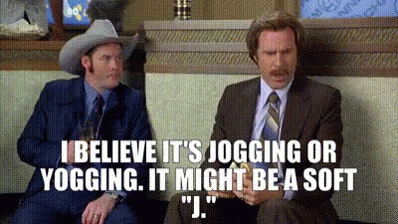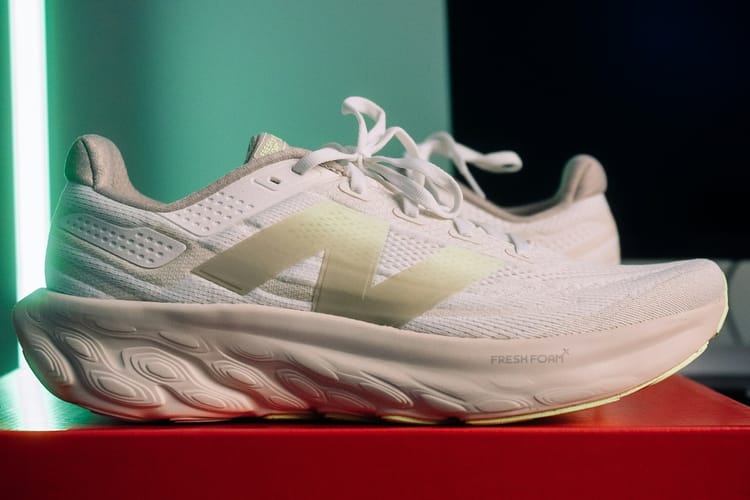Starter Guide to Running

Happy New Year everyone!
Some may be cynical with all the goal setting this time of year, but I honestly love all of it.
Admittedly, starting any endeavor is the relatively easy part, but it is still an important phase in behavior change.
I love running.
For me running plays an important part in my physical, mental, and even spiritual health. (I'll expand more onto this in a later post.)
Everyone may not feel the same way, but I know that most people at least know that running is good for your health.
They're just not sure how to properly start.
If you start off running the right way, you can avoid plenty of issues.
So if I was to start running all over again here is what I would do.
Well I hate to break it to you, but this is a big guide.
I spared no details here.
Please don't get overwhelmed. Consider these as tips that you can take and go as your progress in your running journey.
Come back and refer to this guide as many times as you'd like.
Oh and don't expect to make all these changes all at once!
Be a runner. Set your goals.
I was recently gifted Atomic Habits by James Clear, and one of the biggest take aways is that to set better habits you have to first change your identify.
When you change your identity to your desired self, the actions and behaviors become easier to do.
So be a runner. Take on the mindset of a runner. You're a runner no matter how fast or slow you run. (I've written about this mindset here.)
Next, set your future goals with running. I'd recommend committing yourself to a future 5k race at least 3 months away. This would give you plenty of time to get ready.
And don't worry about how fast your finish. Train to finish the race.
Recruit a friend or family member to join you with your future race too. The accountability with someone else can help.
Get really comfortable running shoes.
Literally, this is where the rubber meets the road.
As a beginner, I believe it's important to have really comfortable running shoes. You want to put all the cards in your favor in making your running enjoyable with every step.
Here are my top recommendations for comfortable beginning running shoes:
These all over very soft landing underfoot, making your training runs feel great. I'd recommend that you get them on feet and then pick the pair that feels the best.
For new runners, these shoes may seem intimidating and that the price can be a sticker shock.
I believe that these shoes are well worth their price because they are versatile for most paces as a beginner and they are durable as well. And of course if you happen to find them on discount then they are an absolute steal.
Wear technical clothing.
Synthetic fiber clothing will be the best to run in. This is because the fabric will wick away sweat avoiding any dampness feeling. You don't have to get too fancy here. Even Target has decent active wear tops and bottoms for men and women.
If you do want to get fancy here, these are my top recommendations:
Cold weather gear: Craft Sports
Craft is a active sports brand coming from Sweden. So who better to trust with your cold weather gear needs?
High-end running gear: SaySky and Janji
I've been a fan of SaySky and Janji's take on running clothing recently. For those fashion conscious, you'll appreciate the selection from these two brands. Both have a premium feel to their clothing. Janji has a neat running short that has multiple pockets built into the waist band, saving yourself the need for a storage belt for your keys and phone.
Invest in a running watch.
I recommend that you invest in a running watch. The technology for these things have not taken any significant advances, so keep it simple here.
The entry-level watches from Garmin or Polar are great choices. The more expensive choices come with more features to help triathletes or come with more smartphone-like features (like taking calls, sending text, playing music, or wireless payments).
From Garmin I'd recommend the Forerunner 45 or Forerunner 55.
From Polar, I'd recommend the Polar Pacer.
All these watches will time your run and give you more data like your heart rate and pace.
I believe the main benefit from a running watch is that their associated app will give you a database of all your runs so you can see your progress.
Oh and if you already have an Apple Watch, then you can use the included Fitness app. Open the app on your watch and choose Outdoor Run. The running data you get is decent, and a great place to start too.
Run easy.
The most common training error new runners make is that they run too fast or too intensely.
Keep. It. Easy.
Seriously!
As I've said before, you're a runner now matter what speed you're at. Eliminate the judgments or any other pre-conceived notions of what running is supposed to be. You do not have to run fast.
As a new runner, training will be focused on gradually increasing time on feet.
You can achieve this by running at an easy pace, just above a fast walk. Some may even call it jogging.

There are three main benefits from running at any easy pace as a beginner:
- Physiologically: Running at an low intensity will fine-tune the aerobic system in your body.
We're not training to be sprinters.
Long-distance running needs the sustainable energy source from the aerobic system. Your body needs to build the needed adaptations to have a robust aerobic system. - Physically: Easy paced running will keep the impact forces through your body low. This will help prevent any excessive soreness your body may feel after your training runs.
Avoiding the high intensity work will allow you to continue running consistently.
More time on feet will help your body adapt progressively for stronger joints, ligaments, tendons, and muscle. - Mentally: Going easy on pace will allow you accomplish long duration running pretty easily. You'll get quick wins in being able to run 20 minutes to 30 minutes continuously for the first time.
Also by avoiding the excessive soreness that comes with more intense running, you can look forward to completing another run on your training schedule.
Work to have your foot land underneath your body.
Or another way to look at it is to avoid having your foot land far in front of your body.
Landing heavily on your heel in front of you greatly increases the impact forces through your legs.
Breathe easy.
Because you're running at a low intensity, your breathing should not feel labored. If you feel that you are breathing much more heavily, then you're likely running too fast.
Take a break. Catch your breath, then move on.
You'll want to practice breathing in and out with your nose only. Save breathing from your mouth for very intense running.
Make real changes happen during recovery.
Running is the stimulus to your body, but the true changes happen during your recovery.
The concept of recovery has been gaining popularity lately and rightfully so. When you recover and rest from your training runs your body is making the necessary changes to be ready for the next run.
Over time your body will be different, performing at an new level.
Here are the main areas of focus for recovery:

- Sleep: This is one of the easiest areas to gain performance. You already do it, but you likely aren't doing it well.
You can experience improved physical and mental well-being with optimizing your sleep. Here's a great article about how to improve your sleep hygiene.
I'd recommend using a sleep tracker to accurately measure your sleep. You can't improve what you don't measure! (Your running watch may have sleep tracking too)
I personally use a Whoop tracker (get one month free with this link).
All smartwatches have a sleep tracking feature that can measure the duration of your sleep and quality of sleep. - Hydration: I personally have struggled with this. I have no problem drinking water.
My problem was not having immediate and easy access to it.
Getting a Stanley cup and having it right on my desk has helped getting hydrated throughout the day. Make sure you're adequately hydrated throughout the day to give your body the building blocks it needs.
The general rule is 0.5oz of water per pound of body weight daily. So for someone 150lbs, it would be best to drink 75oz of water. (Your needs would increase on days that are much hotter.) - Nutrition: Your body needs specific nutrients to rebuild into stronger tendons, ligaments, and muscles.
I believe that consciously focusing on better nutrition has helped my recovery and running performance. I also feel much better during the day too.
Easiest nutrition change? Eliminate all the bad stuff. Here's a good starter list of things to eliminate from your diet:
1. Processed and ultra-processed foods
2. Foods with added sugars
3. Seed oils (all forms of vegetable oils)
4. Alcohol (Yes, eliminate alcohol. Save it for special occasions, but not every weekend has to be a special occasion.)
These four are the low-hanging fruit to make quick changes to your diet. They don't add any positive benefits to your body as you train.
These foods (if you could even call it that) increase unnecessary inflammation in your body, wreck your metabolism, and have little to no true nutrients.
I'll reveal another aspect of nutrition. (This is the part where you'll be thinking wow, Ryan is weird.)
This month marks a year of living a carnivore diet. This was a little experiment with myself to see what changes would occur.
So far it's been great. I have more energy during the day. I've gained muscle mass quickly too.
I'm not the only one who has enjoyed the carnivore diet. Here's a study that found people having few adverse effects and experiencing health benefits and high satisfaction with their health.
I'll leave the details about my carnivore/animal-based diet for another post.
I share all this to make this point: If your current diet is not working for you, make a change!
Follow a training plan.
Last but not least, follow a training plan!
Earlier I mentioned to give yourself a goal race at least 3 months from now.
So if you're a new to running, here is a starting training plan to build a strong foundation in 12 weeks.
You'll see most beginner running plans breaking up the run in intervals, like run 2 minutes, walk 1 minute, then repeat. This isn't necessary if you run at an easy pace.
Your likelihood of getting tired is low. If you're getting tired and finding it difficulty to reach the goal time, you're likely running t0o fast.
If you can't sustain even a jogging pace for the goal time, then go for a fast and brisk walk.
The first four weeks will be getting your body acclimated to the movement and impact feel of running.
Even if you don't feel "tired" at the end of the run, trust the process and stay to the prescribed time.
Your adaptations to running is something you don't feel immediately, but instead realize in later runs.
Oh and for the entire program, allow yourself at least 1 day of recovery between training days.
Week 1-2
Day 1: 15 minutes
Day 2: 15 minutes
Day 3: 15 minutes
Week 3-4
Day 1: 20 minutes
Day 2: 20 minutes
Day 3: 20 minutes
This next section of training will add the element of light speed work done after your day 2 run. These are considered strides. Strides aren't meant as an all out sprint. Instead strides are meant to be a fast run where you emphasize the push off with your legs. This allows you to open your legs up for more power generation.
Week 5-6
Day 1: 20 minutes
Day 2: 20 minutes, post-run strides 10s 4x
Day 3: 25 minutes
Week 7
Rest week. Seriously. Don't run. Do something else like strength train. Cycling. Just take a break from running.
Week 8
Day 1: 20 minutes
Day 2: 25 minutes, post-run strides 10s 6x
Day 3: 30 minutes
This last portion of the plan helps you with the start of your new baseline, 30 minutes of continuous running. Once you can reach 30 minutes of continuous running with minimal difficulty, you will have a great foundation to build upon for longer races (10k to half-marathon).
Week 9-10
Day 1: 25 minutes
Day 2: 25 minutes, post-run fast run 15s 4x
Day 3: 30 minutes
Week 10-12
Day 1: 30 minutes
Day 2: 30 minutes, post-run fast run 15s 5x
Day 3: 30 minutes
Thank you for reading!
If you're made it this far in this starter guide, then THANK YOU for reading. I hope this helps you with your running.
Share this with someone you know who's interested in running too!




